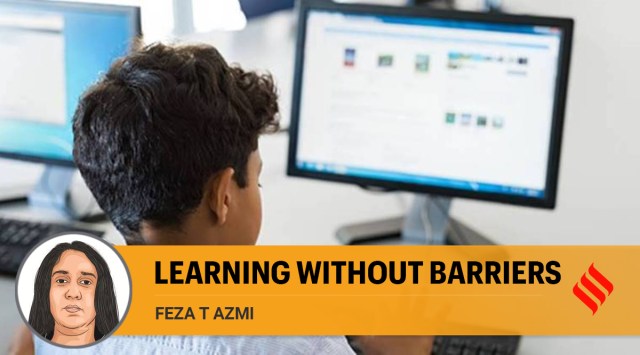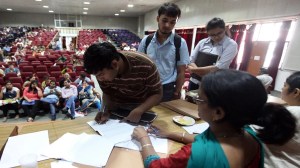- India
- International
How online education can give disabled children greater learning opportunities
Feza T Azmi writes: Among other things, it becomes possible to access learning from the safety and comfort of their homes, saving them from unnecessary inhibitions in attending physical schools.
 Lack of education has a trickle-down effect. Most disabled children are not equipped with foundational skills for employability.
Lack of education has a trickle-down effect. Most disabled children are not equipped with foundational skills for employability.Globally, about 15 per cent of the population lives with some form of disability. Of this, 80 per cent lives in developing countries. Persons with disabilities (PwDs) are among the most marginalised groups. They encounter a range of barriers and are more likely to experience adverse socioeconomic outcomes. Limited support infrastructure can have a significant debilitating impact on everyday life. WHO now considers disability a human rights issue. It emphasises that people are disabled by society and not by their bodies.
Over the last 65 years, the overall global literacy rate has increased by 4 per cent every five years — from 42 per cent in 1960 to 86 per cent in 2019. However, the global literacy rate for the disabled is as low as 3 per cent with just 1 per cent for females. Ninety per cent of disabled children in developing countries do not attend school, says UNESCO. The school drop-out rate is also high due to the lack of adequate infrastructure, inaccessible reading material and untrained teachers. An insignificant number make it to institutes of higher learning.
Lack of education has a trickle-down effect. Most disabled children are not equipped with foundational skills for employability. According to the UN, in developing countries, 80 to 90 per cent of PwDs are unemployed, whereas in industrialised countries, it is between 50 to 70 per cent. In most countries, the unemployment rate for PwDs is at least twice that of those who have no disability.
The pandemic has made us realise how technology is reshaping education. Lockdowns made schools rapidly migrate to online education. This metamorphosis of education systems has far-reaching implications for disabled children. Online education has the potential to make learning more accessible for PwDs. It takes care of physical barriers created by transportation and mobility issues. Children have the advantage of accessing learning from the safety and comfort of their homes. It saves them from unnecessary inhibitions in attending physical schools. Disabled students in higher education too can have access to lectures, libraries and resources without the need to physically navigate remote campuses.
Online learning, both in the synchronous and asynchronous modes, offers added flexibility and the advantage of self-paced learning. With technological aids and assistive devices, it is possible to train disabled children in various skills. E-learning allows the review of materials and repeated viewing of video lectures. Various assistive technologies like screen readers, text magnifiers, speech recognition software, braille keyboards, sign language interpreters, videos with subtitles, audio recordings, etc, can be used.

Internet penetration is increasing fast. As of January 2021, there were 4.66 billion active internet users worldwide — almost 60 per cent of the global population. In 104 countries, more than 80 per cent of the youth population is online. Out of the 830 million young people who are online, 320 million (39 per cent) are in China and India, which are among the countries with the highest incidence of disability.
Prices of internet services have dropped by 50 per cent on average over the last three years and broadband and mobile services are available at much higher speeds. This augurs well for online education. Children are quick learners and adapt fast. With adequate support, adopting e-learning may not be a huge challenge.
The 2030 Sustainable Development Goals focus on “inclusive and quality education for all”. With barely nine years left for the target, greater strides have to be made. Governments and educational bodies have an important role to play in making ICT accessible to disabled students. Those at the forefront of education administration can facilitate designing online courses and learning modules in easy-to-deliver formats. Initial challenges do exist, but students who did not attend schools due to physical limitations at least have an alternative now. This can be a good starting point to bring in students who have been denied access to schools.
Advances in the digital economy are creating unprecedented work opportunities for the disabled, a report by ILO says. With the rise of the gig economy, most work is being done from homes, creating new job opportunities for physically restricted PwDs. Online education could prove to be a turn of the wheel in the quest of PwDs to gain a meaningful life.
This column first appeared in the print edition on September 25, 2021 under the title ‘Learning without barriers’. The writer is professor, Department of Business Administration, Faculty of Management Studies & Research, Aligarh Muslim University
EXPRESS OPINION
More Explained
Apr 23: Latest News
- 01
- 02
- 03
- 04
- 05










































